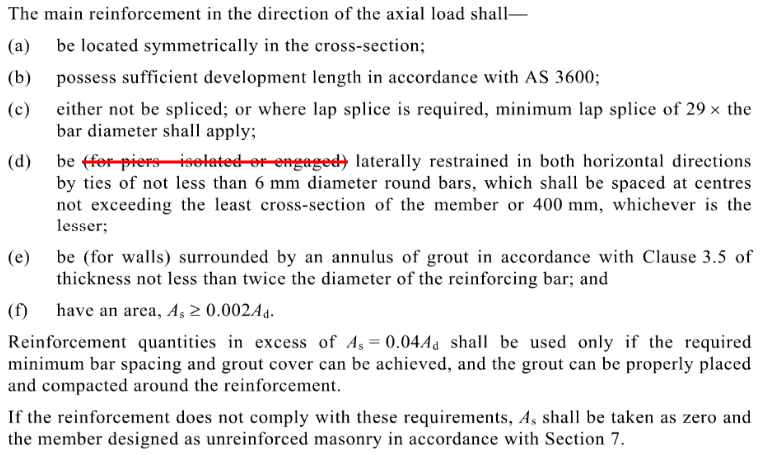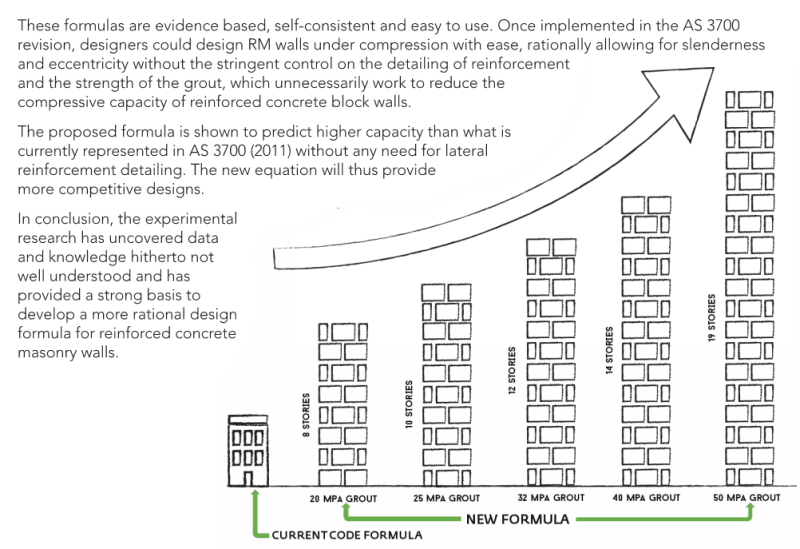We had a large, 6 storey building project, all masonry, a few years back. It was the first project with the 2018 code adopted, as the contractor heard about the new capacities and wanted to take advantage of it. We explained the limitations, needing BlockAid or similar etc. The contractor was all on board, but of course the layers weren't. "We've never had to do this before" etc etc etc. The blockAid worked quite well at holding the reo in place, but does hinder concrete placement. The idea is that the minimum 20mm surrounding annulus of concrete provides restraint, so that the higher, Section 8 reinforced capacities can be achieved, otherwise you treat it as unreinforced.
Unfortunately, unless its been addressed since, I don't think there's really anything stopping you from using 80 or 100MPa core fill to achieve crazy masonry wall capacities. And similar to column vs wall concrete design, I don't think slenderness is handled adequately ie no moment magnification. I wouldn't use anything more than 50MPa, as that was what was tested.
Furthermore, we've seen numerous contractors request a masonry design for building structures as a way to avoid Section 14 in the concrete code, as I believe the only AS3700 seismic requirements to achieve a Mu & Sp of 2 and 0.77 is to have 'close spaced reinforcement', which is just vertical bars at 200centres. Obviously the same ductility analogy adopted for concrete should apply, but until its stated black and white in the codes, people will continue to abuse them.
This picture by the CMAA doesn't help either:
This is why I think the NCC has revoked that part of the code - its a way to cover this loop hole, discretely, as to not upset too many engineers/contractors, whilst covering themselves. Pretty much impossible to get reinforced lateral restraint in a 190thk wall, hence why 3700 only specifies it for piers.





